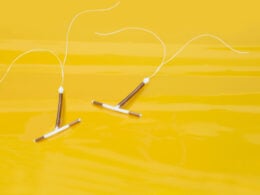2016 had a tough start for us as we lost Karen Langhart, a good friend and a fierce advocate for more transparency about the dangers of contraceptives. Karen’s daughter was Erika, who died in 2011 from a pulmonary embolism caused by the Nuvaring. Her passion is missed, but her work continues: she is still active through the foundation she left. Here are some milestones that marked the year.
We released our documentary Natural Love Stories, a film dedicated to Erika Langhart. It has been viewed by thousands of people, and is definitely opening people’s minds about fertility awareness based methods (FABMs). We also launched the Fertility Diaries, a series of “jovial and educational webisodes” about FABMs by film maker Cassie Moriarty.
Our partners at FACTS published their essential study of fertility apps, which is helping users discern which apps are truly giving them the information they need to make decisions about avoiding pregnancy.
Hormone Matters released the report of phase 1 of their large scale study of birth control and risks of blood clots, revealing some very unsettling facts (like that you don’t have to be a smoker to be at risk). They also launched an excellent blog with tons of facts and stories on these risks.
We learned more about how the use of hormonal birth control dramatically increases the risk of depression, especially among teens. While it was widely reported in the media, not much change happened within the medical and pharmaceutical sector, which continue to ignore the pain and risks experienced by women on these drugs.
A story that was much less reported but should be of great concern as well was the CDC’s October report that the number of cases of STDs in the U.S. reached an all-time high last year. These infections threaten the health of young people, a couple’s chance of being able to have kids, and certainly the emotional health of these patients.
A report from the Journal of American Medical Association just came across my desk, and it states that the 2013 US spending on family planning was $5.1 billion, 75% of which (or about $3.8 billion) went to pharmaceutical products themselves, the rest for medical services. The growth of this market in the past 18 years has been 5.7% per year on average, or a cumulative 271%, almost a 3-fold growth.
I don’t expect this trend to change given the boost the US government has given to Big Pharma through the 21st Century Cures Act…unless we act and make FABMs even more available, more accessible, more popular.
So, along with the Natural Womanhood team, I thank you for all you do to make a difference and help inform women about the FABM option! We’re excited about what 2017 will bring in that regard, and look forward especially to the release of the Sweetening the Pill documentary.
To your health and the health of your loved ones! Happy New year!
Gerard Migeon











